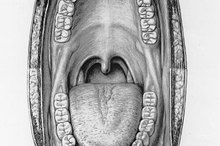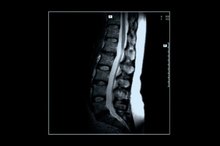What Are the Long-Term Effects of a Spinal Fusion?
Experiencing back pain? You're not alone. The National Institute of Neurological Disorders and Stroke indicate 80 percent of adults have experienced low back pain 5. A spinal fusion is a common surgical procedure to fuse two or more bones of the vertebrae to form a single bone 13. According to the American Academy of Orthopaedic Surgeons (AAOS), the surgery is most often done to decrease pain or increase mobility caused by a number of back problems 13.
If you are experiencing serious medical symptoms, seek emergency treatment immediately.
Degenerative disc disease, herniated disc, infection, scoliosis, tumors, fractured vertebrae, spinal stenosis, and spondylolithesis are the most common cited back problems that could warrant a spinal fusion 13. These issues can arise from arthritis, injury, aging, or disease.
Dangers of a Spinal Fusion
Every surgery comes with a risk of complications 2. Following a doctors orders and adhering to post operative instructions are extremely necessary to minimize the risk of complications in the weeks and months following surgery.
Taking prescribed antibiotics can reduce the risk of infections at the surgery site. Research published in The Open Orthopaedics Journal in 2015 indicated that out of a sample size of 95 patients receiving spinal surgery, only 26 percent of those had complications, mostly minor 2. The highest complication was surgical site infection. This stresses the importance of good post-operative wound care.
The AAOS indicates that physical activity too soon after surgery can result in pseudarthrosis, which may prompt a second surgery 13. Smoking, diabetes, and advanced age can also increase the risk of developing pseudarthrosis.
- Every surgery comes with a risk of complications 2.
- Following a doctors orders and adhering to post operative instructions are extremely necessary to minimize the risk of complications in the weeks and months following surgery.
Recovery Time for a Spinal Fusion
Complications With an L5-S1 Spinal Fusion
Learn More
For those who choose spinal surgery, they must realize it takes time to heal. It can take many months to fully recover from spinal fusion surgery 13. The Mayo Clinic indicates you will most likely be in the hospital for 2 to 3 days after surgery 13. The AAOS recommends starting physical therapy at week 6 and ongoing until 3 months post surgery 13. You may be instructed to wear a back brace for a time specified by your physician. This is to keep your spine properly aligned and reduce the risks of complications 2.
Long Term Effects of a Spinal Fusion
The surgery is joining two bones together, so there is a risk for decreased range of motion, indicates the AAOS, but they note that most patients will not notice a difference. There is the possibility that the surgery is not successful in treating the pain and the symptoms return. In addition, nerve damage is a rare, but possible long term effect of having a spinal fusion 13. Blood clots, bleeding, and pain at the surgical site are potential complications of spinal fusion, according to the AAOS 13.
Maintaining a healthy lifestyle to include good nutrition, physical activity when appropriate, and following the orders given by your doctor can greatly increase the positive outcome of the spinal fusion surgery and minimize the complications that may arise otherwise 13.
- The surgery is joining two bones together, so there is a risk for decreased range of motion, indicates the AAOS, but they note that most patients will not notice a difference.
Alternatives to Spinal Fusion
How Far Should Someone Walk After Knee Replacement Surgery?
Learn More
Harvard Medical School makes some suggestions for alternatives for spinal fusion, as they indicate spinal fusion is only helpful in approximately 50 percent of patients 134. They list some alternatives, such as:
- chiropractors
- physical therapists
- osteopaths,
- massage therapists
Related Articles
References
- AAOS - Spinal Fusion
- The Open Orthopaedics Journal: Risk of Complications in Spine Surgery: A Prospective Study
- The Mayo Clinic: Spinal Fusion
- Harvard Medical School - Harvard Health: Turning Your Back on Back Surgery
- NIH: National Institute of Neurological Disorders and Stroke: Low Back Pain Fact Sheet
- Wang J., Dailey A., Mummaneni P., Ghogawala Z., Resnick D., Watters W., Groff M., Choudhri T., Eck J., Sharan A., Dhall S., Kaiser M. Guideline update for the performance of fusion procedures for degenerative disease of the lumbar spine. Part 8: lumbar fusion for disc herniation and radiculopathy. J Neurosurg Spine. July 2014.. http://www.ncbi.nlm.nih.gov/pubmed/24980585
- Resnick, D., Choudhri, T., Daily, A., Groff, M. Khoo, L., Matz, P., Mummaneni, P., Watters, W., Wang, J., Walters, B., Hadley, M. Guidelines for the performance of fusion procedures for degenerative disease of the lumbar spine. Part 8: lumbar fusion for disc herniation and radiculopathy. J Neurosurg: Spine 2:673–678, 2005.
- Wang J., Dailey A., Mummaneni P., Ghogawala Z., Resnick D., Watters W., Groff M., Choudhri T., Eck J., Sharan A., Dhall S., Kaiser M. Guideline update for the performance of fusion procedures for degenerative disease of the lumbar spine. Part 8: lumbar fusion for disc herniation and radiculopathy. J Neurosurg Spine. July 2014..
Resources
Writer Bio
Sarah Pflugradt holds a Master of Science in food science and human nutrition from Colorado State University. Pflugradt is a freelance writer and registered dietitian with experience in clinical nutrition and outpatient counseling for diabetes management and weight loss.









